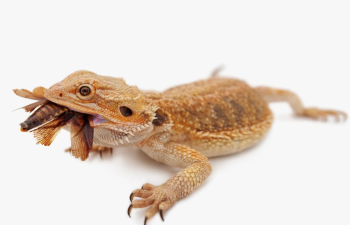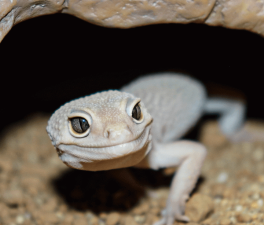It is well known that a highly social lifestyle is essential for many insects, mammals, and birds. Bees work together to build large hives; wolves work together to separate lone reindeer from other wolves; and during autumn migration, many birds gather together to reduce the risk of predation with the power of the group.
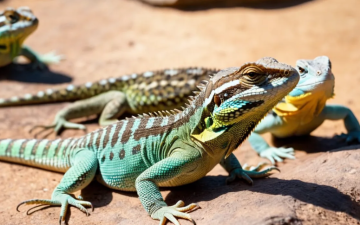
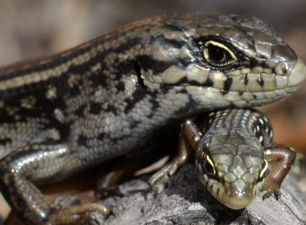
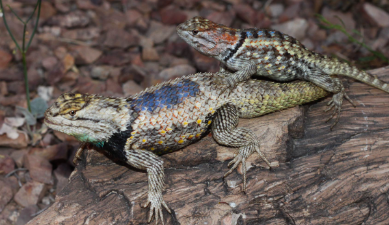
It is well known that a highly social lifestyle is essential for many insects, mammals, and birds. Bees work together to build large hives; wolves work together to separate lone reindeer from other wolves; and during autumn migration, many birds gather together to reduce the risk of predation with the power of the group.
In contrast, reptiles are not widely considered to be highly social animals. They are often seen as solitary explorers. However, this is not the case. In fact, reptiles' social behavior is much richer than humans realize.

Misunderstandings and prejudices: cold-bloodedness does not mean cold-bloodedness
Humans have long had varying degrees of prejudice and hostility towards reptiles. This misunderstanding was reflected in the triune brain hypothesis of Paul MacLean, a neuroscientist at Yale University (then the National Institute of Mental Health) in the 19th century. The hypothesis speculates that the human brain consists of three parts: the reptilian R-complex responsible for survival and basic instinctive behaviors; the paleomammalian complex that controls emotional behaviors; and the neomammalian cortex responsible for higher-level functions such as problem solving and language.
Under the influence of Paul MacLean's "Trinity Brain Hypothesis", people generally believe that reptiles, especially lizards, only have simple survival instincts and lack advanced emotions and social behaviors. This prejudice is not only deeply rooted in people's cultural concepts, but also affects the research investment in reptiles. Compared with birds and mammals, there are significantly fewer research projects on reptiles.
In addition, the social behavior of reptiles is often secretive and difficult to be detected by humans. They are highly sensitive to human presence, which further increases the difficulty of research. However, despite these prejudices and challenges, researchers are still exploring the complex social world of reptiles.
Among the many discoveries, the "monogamy" of pine cone lizards is particularly eye-catching. This system is not unique to humans, but was accidentally discovered among pine cone lizards in the wild. Every year during the mating season, they will return to the same partner and form a long-term partnership. Australian biologist Michael Bull did not have much interest in lizards at first. He accidentally noticed this phenomenon when he was studying ticks on lizards. Through years of observation and measurement, he found that pine cone lizards can somehow find long-lost partners. There is even a pair of pine cone lizards that have been paired for 27 years and still maintained a deep relationship until the end of the study. This monogamous partnership is rare in the animal kingdom and adds a rich touch to the social behavior of reptiles.
Compared with the complicated and romantic courtship rituals of humans, the courtship process of pine cone lizards may seem simple and rustic, but it is also enough to touch people's hearts. Male pine cone lizards will follow the female for weeks or even months to escort her and resist the intrusion of other male reptiles. Sometimes, people have even observed that male pine cone lizards will let the female spouse eat first. This humble behavior is not unique to pine cone lizards. Among the whiptail lizards in Central America, males will also provide a cute dead frog for their potential spouses to enjoy before mating to show respect and love.
However, love stories do not always end with a happy ending. Sometimes, a mating lizard will suffer the unfortunate death of one of its partners. When faced with such a loss, the lizards will spend a long time beside their deceased partner, gently pushing the body of their partner, a behavior similar to the way primates and cetaceans mourn. Although it is impossible to determine whether these lizards truly know how to mourn, such behavior certainly shows a deep emotional bond between them.

Next, let's talk about parent-offspring relationships in reptiles
Despite their affectionate mating, lizards are not the most attentive parents. Female lizards give birth to two or three large pups (each weighing nearly 0.25 kilograms, while adults only weigh about 1 kilogram at most), but then the relationship between mother and offspring gradually becomes distant.
Although lizards appear to be more distant in parent-offspring relationships, this is not the case for all reptiles. In fact, many crocodilians show strong maternal instincts. Female alligators carefully guard their nests to ensure the safety of their eggs, while young alligators emit unique distress calls to attract the mother's protection. Rattlers, often seen as cold reptiles, also show touching social habits and family bonding. Genetic studies show that pregnant female rattlesnakes are more likely to spend time with relatives, revealing the importance of family groups to them. When multiple female rattlesnakes spend their pregnancy together, those that have not yet given birth will stay close to the offspring of snakes that have already given birth. The mother snake will stay by the side until the young snakes shed their first skin and respond to any potential threats.

"Group life" in solitary life
In addition to close family bonds, many reptiles also show unique habits of group activities. For example, crocodiles in Africa, Asia and Australia will block the passage of migrating fish by lying side by side with their mouths open. This cooperative fishing behavior was recorded by explorer William Bartram in the 17th century, who described the St. Johns River in Florida.
This group behavior of reptiles may have been more common before humans made large-scale changes to the natural environment. Unfortunately, due to human interference, the range of alligators was destroyed, causing them to almost become extinct in the 1960s. Today, except for some special cases, this chain fishing and other cooperative hunting behaviors have become very rare and difficult to observe.
In addition, many reptiles have also demonstrated the ability and characteristics of "social learning". For example, red-footed tortoises, which are usually regarded as solitary animals, will obtain food by observing their companions. Similarly, reptiles such as Italian wall lizards also show social behaviors of learning from other species.
As more research is carried out, people gradually find that reptiles are not as cold and ruthless as traditional impressions. Instead, they show rich sociality and form little-known secret societies. When this mysterious world is gradually unveiled, the image of reptiles may no longer be so scary, but full of more fun to explore.


